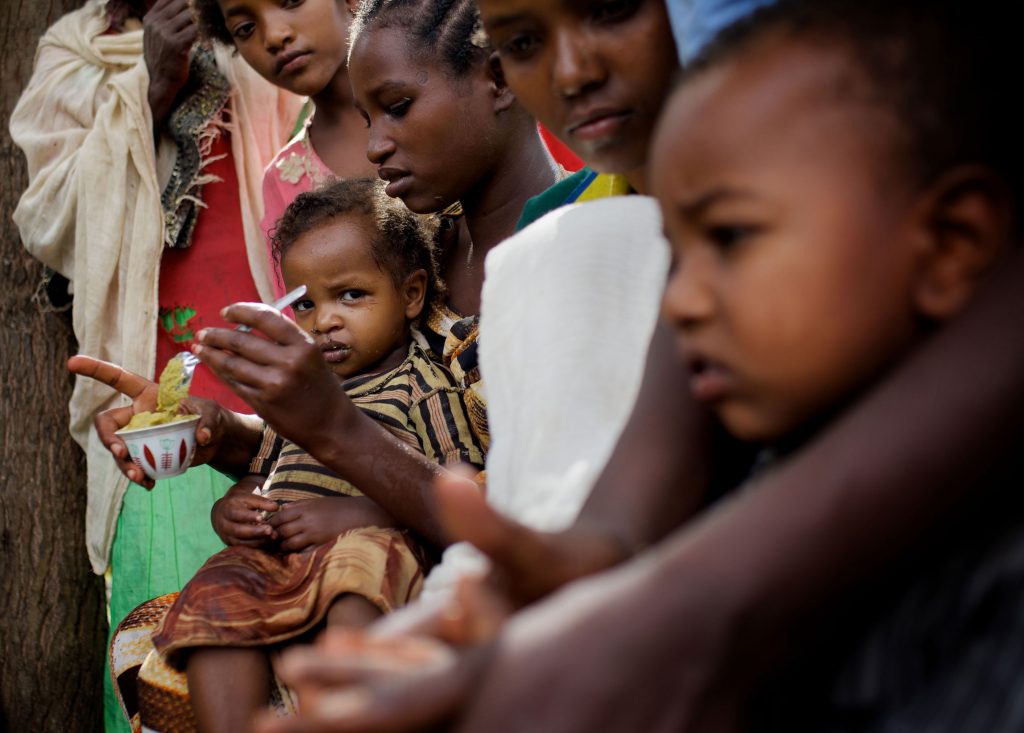
Nutrition, Food Security & Livelihoods
Nutrition: The Foundation of Life.
Nutrition is the foundation of life. Nearly half (about 45%) of all deaths among children under 5 are linked to inadequate nutrition, including both chronic and acute malnutrition. Poor nutrition also carries enormous social and economic costs, leaving millions of children with stunted growth, compromised cognitive development and poor physical health, costing the global economy as much as $3.5 trillion per year, according to the World Health Organization. Childhood malnutrition reduces an individual’s future earnings by at least 20% and robs some of the world’s poorest countries of at least 8% of GDP. The tragedy is that malnutrition is both preventable and treatable if addressed in time.
Our approach to nutrition is holistic: we work to both prevent and treat malnutrition. We strengthen nutrition programs at the national, local and community levels in some of the world’s most challenging environments. Our prevention strategies focus on vulnerable groups, including adolescents, pregnant and lactating women, and children under 2. Our curative strategies center on children under 5 and pregnant and lactating women. Our food security and livelihood programs help these vulnerable groups grow nutrient-rich foods and diversify their diets.



Areas of Focus
Overview
Nutrition is pivotal to life and growth, but at no time is it more important than during the first 1,000 days of life, from conception until a child’s second birthday. Suboptimal nutrition during this window of opportunity deprives a child of reaching their full potential. It can cause impaired physical and cognitive development and can lead to increased nutrition-related morbidity and mortality, heightened risk of developing non-communicable diseases later in life, and decreased IQ and school performance, resulting in lower lifetime earnings. Malnutrition during childhood also can affect generations to come because malnourished adolescent girls might have a sub-optimal nutrition status during pregnancy, which leads to low birthweight babies who in turn may experience malnutrition during their childhood. Collectively, high levels of malnutrition among a country’s children can weaken economic growth, making it important nationally for a country to break this intergenerational cycle of malnutrition with appropriate nutrition and food security interventions.
Key Stats



Overview
Food security exists when people have the physical, social and economic access to sufficient food on a sustained basis that meets their dietary needs for an active and healthy life. This definition is best summarized in the four pillars necessary to achieve food security: availability, access, utilization and stability. Food availability depends on local production, imports, outside assistance, existing stocks and what is for sale in local markets. Access may involve economic access (having the money to buy food) or unfettered physical access. Utilization is the nutritious benefit gained from the food—the degree to which the body can absorb the nutrients, which depends on factors such as age, quality of the diet, a person’s health condition and the availability of potable water. Stability is a measure of how constant these three factors remain when food security is threatened.
Our food security programs are designed around saving lives, protecting poor families from selling their assets to purchase food, strengthening families—particularly women—to provide nutritious foods for their families and increasing access to micronutrient-dense foods.
Key Stats


Overview
A livelihood constitutes the ability to make a living. A livelihood is sustainable when it can survive the stress and shocks of the surrounding environment while not undermining the natural resource base.
For more than two decades, International Medical Corps has provided livelihoods assistance to enable communities to recover from disaster. In the face of armed conflict or natural disaster, those most vulnerable are often forced to sell off their limited wealth—including livestock, seeds and household goods—to purchase necessities required for survival, such as food, medicine and clothing, or to pay for school fees and other essential services.
Because of this, protecting and promoting livelihoods is central to our mission to support swift recoveries from disaster and to strengthen local capacities to survive future shocks. We help expand temporary income-earning opportunities—focusing, for example, on rebuilding, strengthening and diversifying the centers of wealth that communities draw upon for their livelihoods.
We support entrepreneurship and other market-based livelihoods, such as vocational and life-skills training. We provide cash grants, cash for work and non-farm income-generating activities. We support village savings-and-loan schemes to create job opportunities within communities—including for younger members of the community, who might otherwise be forced to migrate to earn enough to survive following a disaster.
Key Stats


